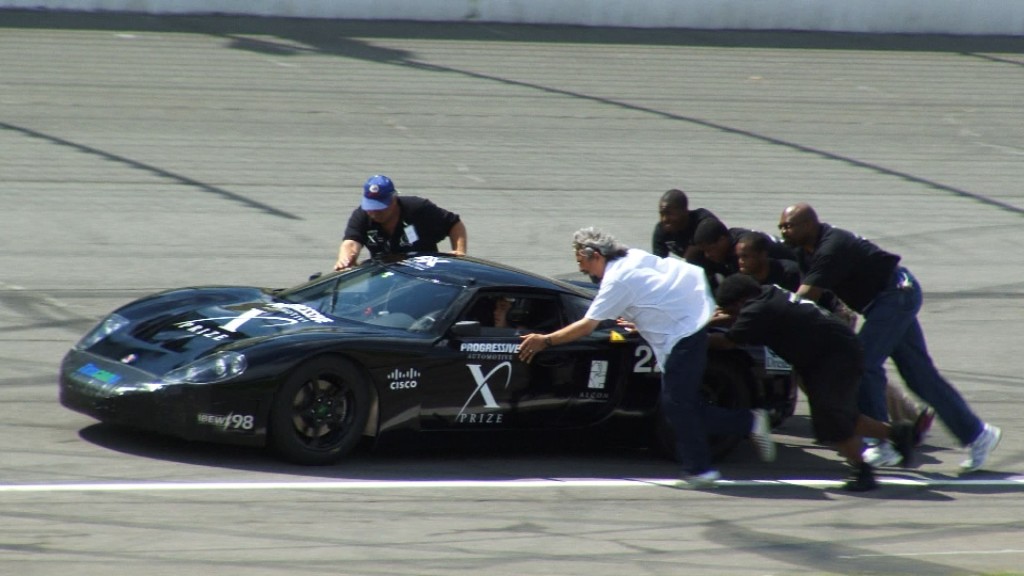What is Project-Based Learning?
July 17, 2012
Share
“Intelligence is exhibited in so many different ways,” teacher Simon Hauger told FRONTLINE in Fast Times at West Philly High. “Students need to be engaged in different ways.”
Project-Based Learning (PBL) tries to tackle that. It’s an alternative approach to education that encourages students to seek solutions to challenging and relevant problems — and bridge the gap between school and the real world.
How It Works
There is no single approach for implementing PBL in the classroom. All projects vary and so can the methods for student evaluations and grading. But the main goal is to create rigorous challenges designed to promote critical thinking. Teachers then track the students’ progress.
Some other key characteristics:
- The instructor and students come up with complex problems that are applicable to real-world issues. (What’s one way to address the housing blight in our city? How can we persuade residents to use energy-efficient light bulbs?)
- The teachers act as facilitators, laying down the initial framework for the project, establishing project guidelines and evaluating the students throughout the processes.
- Working in groups, students brainstorm solutions.
- Grades are determined by overall student performance and the quality of the final projects. Instructors will look at the student’s teamwork, individual contribution, understanding of concepts and realization of the project. There are no single solutions or answers — though some are better than others.
Where It Came From
Early foundational theories of PBL date back nearly a century ago. Philosopher and educational reformer John Dewey proposed the learning-by-doing method. The 20th century Italian educator and physician Maria Montessori suggested that in a well-fostered and prepared environment, children are able to teach themselves, and self-direct their learning.
Nearly a half-century later, in the 1960s, what we now know as PBL was formally developed. It was first introduced at McMaster University in Canada and became a standard practice in medical education. By the 1980s and ’90s, the practice was adapted in some K-12 schools.
Is It Successful?
Few studies have measured the effect of a PBL curriculum on students’ successes, since the method is so broad. But some of the most widely cited studies on PBL suggest that the approach does work.
A study by Stanford professor Jo Boaler (2002) compared the academic achievement of students in mathematics over the course of three years. The findings revealed that students who went to schools that used PBL outperformed students who went to traditional schools.
A second popular study by Stanford’s Brigid J.S. Barron and others at Vanderbilt University’s Learning Technology Center (1998) tested students working collaboratively using a PBL method to develop a series of video simulations. A control group developed a second series of video simulations using traditional methods of learning. The students using PBL scored higher in problem solving and planning than the control group.
What Are the Limitations?
Critics say students lack the knowledge to understand the concepts behind a given project, and that independent research can give students a false sense of understanding.
One survey of undergraduate students who took a project-based learning course found that some found the challenge overwhelming. First-time students struggle to identify what they need to know in order to solve problems.
Who’s Doing It?
While there’s no exact number, Boaler says that few schools in America — perhaps around 1 percent — employ project-based learning on a wide scale.”This makes sense given teachers’ experiences and the pressure from the state standards they have had to use in recent years,” she told FRONTLINE over email.
There are some, however who’ve bucked this trend.
An early adopter, California’s Buck Institute for Education, began in employing and promoting PBL in the mid-90s. Another California school, New Tech High School in Napa, Calif., started around the same time and, to date, has “graduated 1091 students, sending them to an impressive list of top colleges and internships with nearby Silicon Valley companies.”
Founded in 2000 as a charter school in San Diego, High Tech High has since expanded into a K-12 program focused on project-based learning. Students have constructed functional robots to enter in competitions, produced a bilingual cookbook, wrote, directed and performed in a historical drama to understand the Vietnam War, and constructed museum displays to demonstrate centrifugal force and the concept of pitch.
As for West Philly’s Simon Hauger, the engineer-turned-teacher started a new program last year for high-school students centered around project-based learning. The Sustainability Workshop is a pilot program linked to the Philadelphia school district, based on the idea that kids learn best when they’re interested in what’s being taught.
Related Documentaries
Latest Documentaries
Related Stories
Related Stories
Policies
Teacher Center
Funding for FRONTLINE is provided through the support of PBS viewers and by the Corporation for Public Broadcasting. Additional funding is provided by the Abrams Foundation; Park Foundation; the John D. and Catherine T. MacArthur Foundation; and the FRONTLINE Journalism Fund with major support from Jon and Jo Ann Hagler on behalf of the Jon L. Hagler Foundation, and additional support from Koo and Patricia Yuen. FRONTLINE is a registered trademark of WGBH Educational Foundation. Web Site Copyright ©1995-2025 WGBH Educational Foundation. PBS is a 501(c)(3) not-for-profit organization.



















